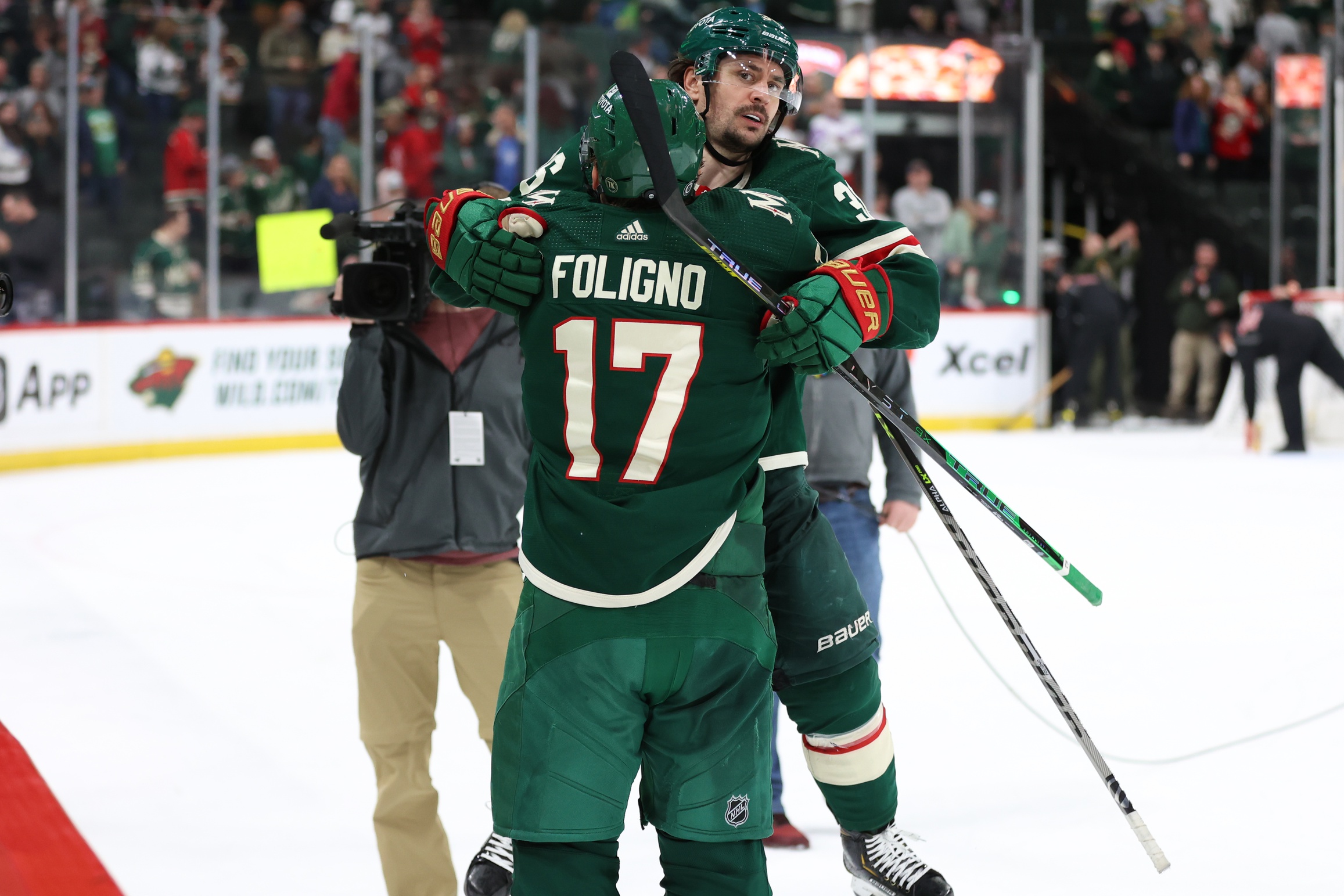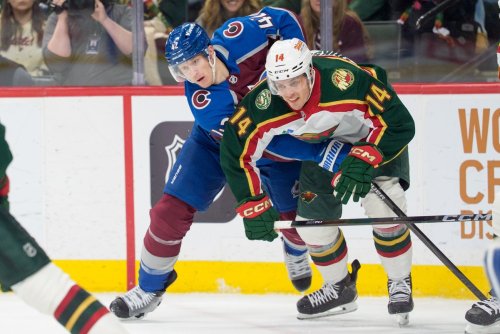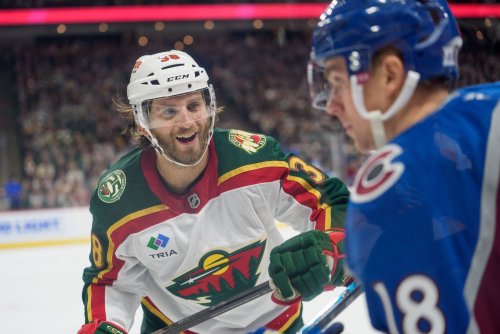
You’ll hear a common refrain from fans in the State of Hockey: Just one before I die. The Minnesota market asks for just one Stanley Cup, one Super Bowl, and one Championship run. It takes a lot of pain for fandom to make one contemplate mortality.
With 32 franchises, the average NHL fan should see a championship by the time they reach middle age. That’s just simple math. Sure, teams that engage in a cycle of buying and selling may take longer or shorter to build a contender, but the math should even out in the long run. Especially for the teams that are in the playoff mix every year, right?
Except, fans in this state are all too familiar with the limitations of that strategy. The Vikings and Wild are masters at getting stuck in always a playoff team, never a contender limbo. Some fans love the excitement it brings in the regular season. Others beg the team to blow it up and start from scratch.
If the teams can’t stomach tanking, at least pick a year when the writing is on the wall to bring along younger players. But by re-signing Mats Zuccarello, Marcus Foligno, and Ryan Hartman, the Minnesota Wild indicated that that year won’t be coming anytime soon.
It sounds fatalistic but consider just how quickly the near future of this franchise changed. When the Minnesotan sun rose on September 29th, the Wild had nearly $23 million in cap space projected for 2024-25. There was an open spot for a No. 1 center, a top-line wing, and another winger in the top 9. By sunset on October 9th, those spots and $12.125 million of that cap space were gone.
That was tough for the “blow it up” crowd. The past few years have really smelled like a conscious rebuild. The team moved on from Mikko Koivu, Zach Parise, and Ryan Suter and incurred a heavy dead cap hit by buying Parise and Suter out. Without adequate cap space, they had to move on from fan favorites Kevin Fiala and Matt Dumba.
The team remained competitive, mostly through Kirill Kaprizov’s arrival and an elite defense. But Minnesota’s defense is slowly aging and turning over. Conversely, they’ve locked up a relatively young forward group: Kaprizov, Matt Boldy, Joel Eriksson Ek, Marcus Johansson, and Frederick Gaudreau.
Fans had earmarked many of the remaining forward spots for young talent. Sammy Walker and Adam Beckman seem ready to be eased into NHL action. Danila Yurov, Marat Khusnutdinov, and Liam Ohgren should eventually arrive in St. Paul by the summer of 2024. Perhaps not all of them would be ready, but now there’s precious little room for any of them among the top-six forward spots.
Suddenly, cap space in ‘24-25 seems tight. The team has under $10.8 million in cap space. From that, they need to give Sammy Walker, Connor Dewar, and Calen Addison a raise. After that, they’ll need to pay another forward, plus a seventh defenseman. That doesn’t leave much room for imagination.
To be clear, the Foligno, Zuccarello, and Hartman extensions aren’t bad deals. The Zuccarello deal is a steal for Minnesota, even accounting for his age. At only three years, Hartman’s extension is efficient as long as he keeps up his current quality of play. Foligno’s contract may be an over-pay, especially given the term, but his role in the locker room is impossible to measure.
Foligno’s is the least efficient from an analytical perspective, but it’s balanced out well by Zuccarello’s deal.
In Luszczyszyn’s summer article on contract efficiency, he valued Hartman’s 2023-24 value (his age 29 season) at $5.4 million. Even factoring in age, he’ll likely outplay a $4 million AAV in over his age 30-32 seasons.

None of these numbers captures the value each of these players brings to the Wild’s team culture, which might be why they’ve been able to lock down their young players at such efficient deals over the long term. Taken together, these contracts are approximately even value over the lifetime of the deals.
That’s the operative phrase, though -- “over the lifetime of the deals.” The value of these contracts gets worse every year because each player will most likely decline faster than a rising salary cap can reduce the sting of these deals. They were signed knowing they would look good for the first year or two, then lose value. So what good are they if Minnesota can’t contend in those years?
Conventional wisdom in the buy-sell cycle of sports is that teams should eat bad contracts in the years they don’t expect to contend. Pay off aging veterans from the last Cup run, or weaponize cap space for draft assets. These three extensions seem to buck that trend. Minnesota’s best chance to contend is for the top-tier prospects (Rossi, Faber, Ohgren, Yurov, etc.) to join the team, develop quickly, and power the team to a championship. Factor in growing pains, and that likely won’t be until the 2026 or 2027 Stanley Cup playoffs. Theoretically, these are the least efficient years for this set of contracts.
There are only three reasons the team would sign these deals:
- They don’t know about aging curves (unlikely)
- They think the team should go all in now and deal with the consequences later.
- The team totally eschews the cycle of rebuilding and contending.
None of these are good for fans with a Championship or Bust mentality. No. 1 would be laughable, and No. 2 would call into question the team’s ability to evaluate its own roster. If that’s the case, don’t hold your breath for new management anytime soon. The team promoted and extended Bill Guerin this offseason.
More likely than either of these (thankfully) is No. 3, which is somewhat unsatisfying. Then again, the truth often is. A more interesting question is, Why does the team think this way?
Ask yourself what kind of person is so obsessed with hockey as to become an executive. Owners must move billions of dollars in assets to acquire an NHL franchise -- either that, or they’re born into a family who’s already done that. Front office executives are even crazier. They decided in their early career to jump into one of the most competitive labor markets. They believe that the only thing more competitive than working in professional sports is them. In Bill Guerin’s case, he was right.
Ultimately, Guerin can only stomach so much rebuilding. Perhaps that’s why he bought out the Parise and Suter contracts in the first place -- he could handle a few years of nasty cap hits. Years of working around them before years of cap recapture hell? Not so much.
That squares with the limited guidance that team owner Craig Leipold puts into the public sphere. By all accounts, he’s a hands-off owner. However, there seems to be a clear mandate to compete. Michael Russo recently asked Leipold about rebuilding. Leipold responded, “That’s a word that has not been ever mentioned in the offices of the Minnesota Wild in the last couple years.”
For fans who want to see the team’s big rebuild, look to the past. Barring new management and probably new ownership, the buyouts and Kevin Fiala trade are the closest this team will come to that. In the meantime, enjoy the ride. Minnesota has proven that competing every year is a priority.
Call it the team’s thesis statement. Every year, every game, the Wild will be playing meaningful hockey. Fans will always have something to cheer for, and their favorite players will always have something to play for. With savvy cap management and drafting, Minnesota guarantees an exciting product -- 86 games per year or more.
Think you could write a story like this? Hockey Wilderness wants you to develop your voice, find an audience, and we'll pay you to do it. Just fill out this form.
-
 1
1







Recommended Comments
Join the conversation
You can post now and register later. If you have an account, sign in now to post with your account.
Note: Your post will require moderator approval before it will be visible.